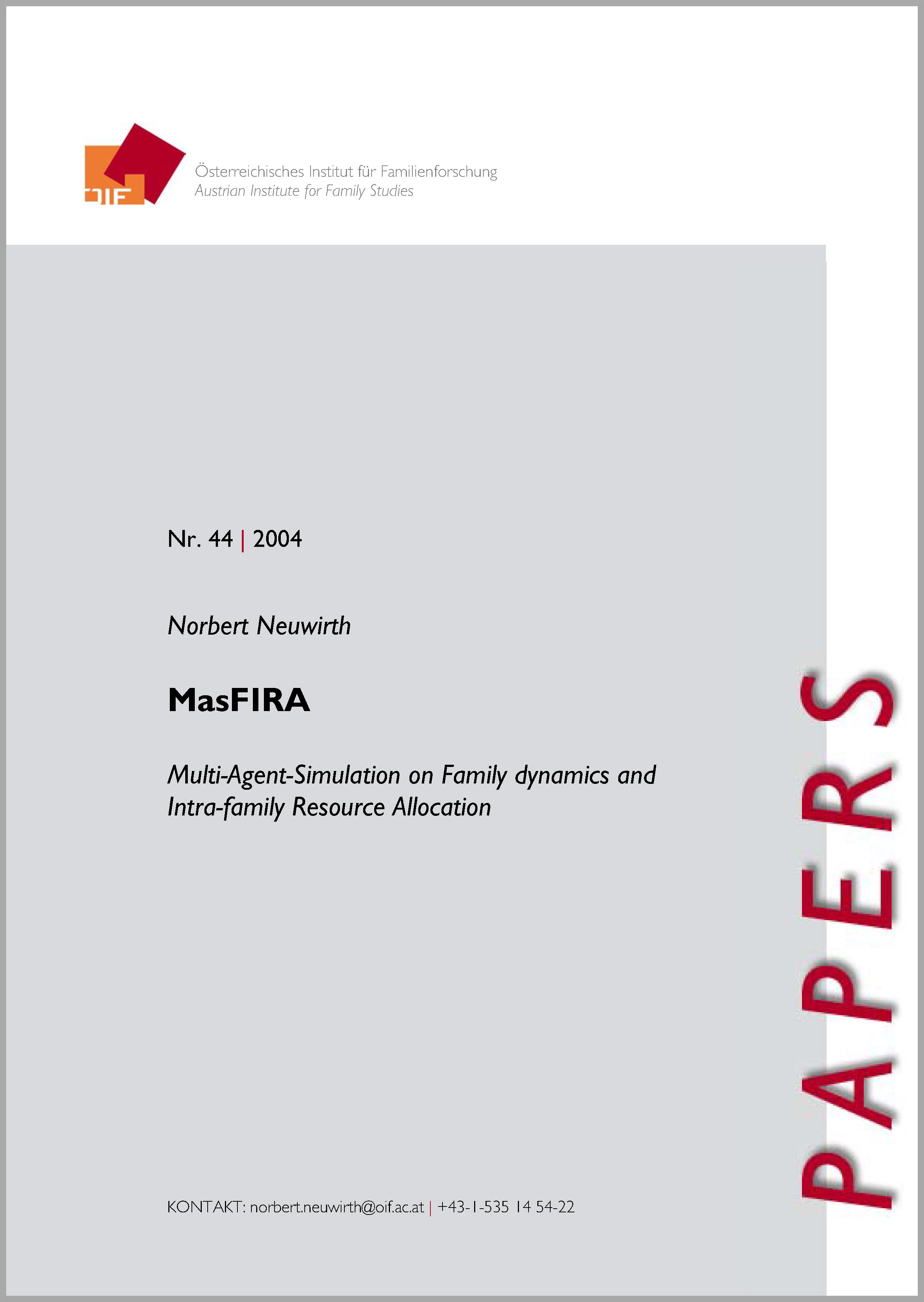masFIRA
Multi-Agent-Simulation on Family dynamics and Intra-family Resource Allocation. Working Paper 44
Von: Norbert Neuwirth
Working Paper Nr. 44 | April 2004 | 43 Seiten
This is a documentation of the agent-based-simulation environment “masFIRA” that has been developed to demonstrate implications of game theoretical models of the partner matching process, bargaining approaches on intrafamily resource allocation, and fertility behaviour. As development still proceeds, this documentation is rather a status report on models and modules implemented by December 2004.
Structural family dynamics – partners’ matching processes, stability of families, occurrence of divorces, and fertility – are handled quite differently within social sciences. While sociologists and psychologists primarily tend to investigate these topics with depth-grounded methods, economic theory and empirical approaches rely on comparably straightforward models of rational behaviour. Individuals (“agents”) differ by endowments – talents, human capital stocks, property, integration in social networks, … – and by their preferences. Most approaches abstract from these differences as economic models of household behaviour discuss the issues subjected by parameteriseable utility functions subject to endowment constraints held as general as possible. Therefore, economic models can come to unambiguous results of the optimisation problem of a prototype agent, but agents’ behavioural heterogeneity is systematically neglected. This is the documentation of a demo-version of an agent-based simulation environment, where well developed miroeconomic models of family dynamics and fertility behaviour, intra-household decisions and resource allocations, human capital investment, time allocation and labour supply are condensed to a – still compact – dynamic model. In section 2 the underlying economic models will be presented, followed by a general description of ABS programs (section 3). The concept of masFIRA will be presented in section 5, followed by the description of some simulation runs in chapter 6. The paper concludes in an outlook (7). The program code is appended after the literature index.
Download (PDF): masFIRA. Working Paper Nr. 44 | 610 KB

